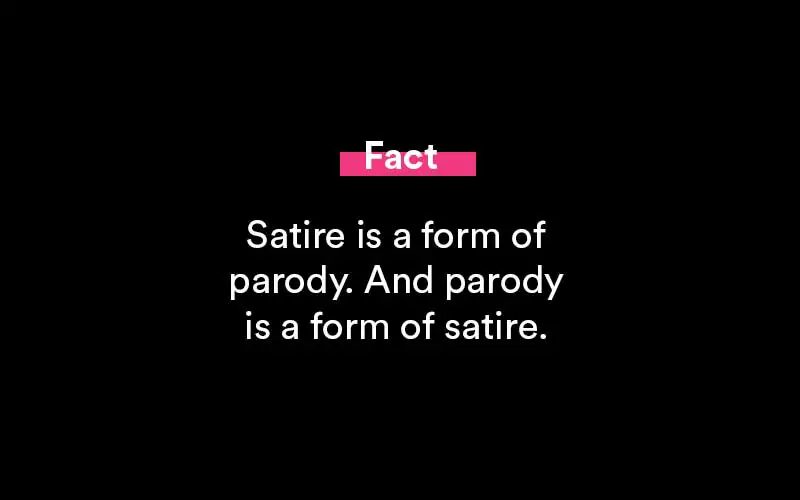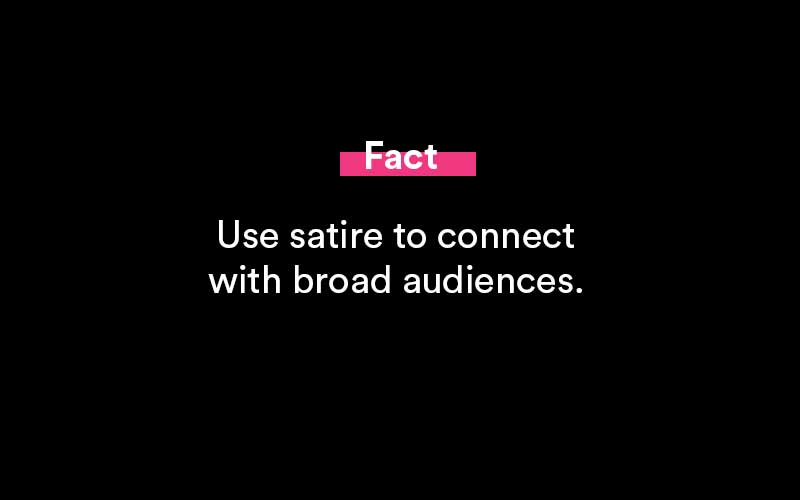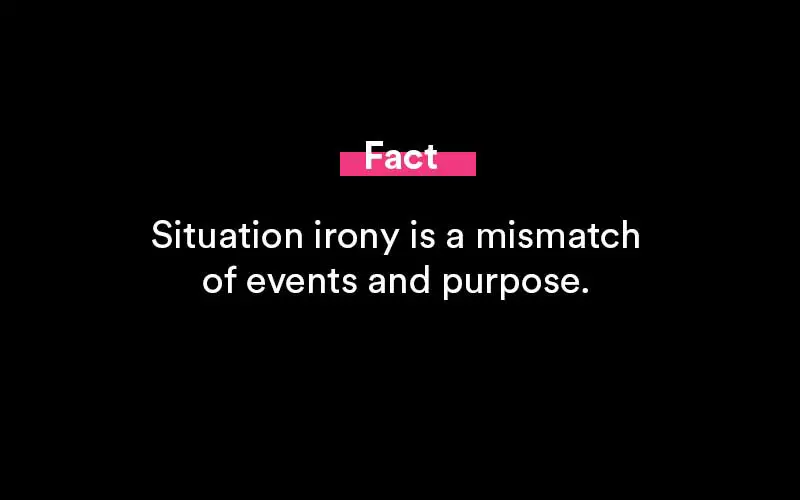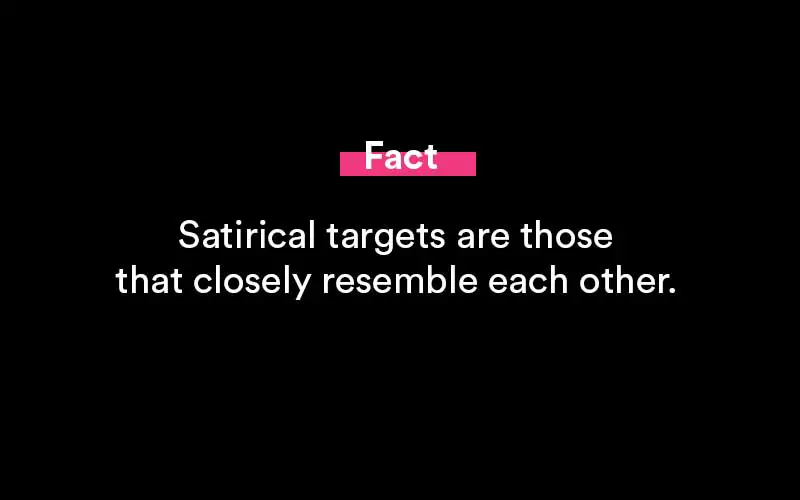Satirical Techniques - Definition, Strategies, The 7 Types
What are satirical techniques? Satire is a kind of writing that frequently serves to educate and entertain its audience. You can write satire if you work for newspapers or other media sources, if you write your own fiction or non-fiction, or if you just wish to incorporate exaggeration and comedy into your professional writing.
Understanding the most effective satire tactics might assist you in connecting with your readers or in attracting a new audience who loves that type of writing.

What's satire?
Satire is the use of literary elements such as irony, comedy, or exaggeration to criticize someone or something educationally. Satire frequently attacks public personalities, politicians, political parties, influential ideas, and popular culture.
Satire is a form of social criticism that can be included in a variety of literary forms, including comic books, novels, short stories, poetry, and amusing news pieces or essays.
Horatian
Horatian is a satire directed at human weaknesses rather than social concerns. Its major objective is frequently to entertain through approachable subjects, rather than to teach about more complex concerns.
Juvenalian
Juvenalian satire is frequently used to reveal flaws, inequalities, or other issues within a community or group of individuals. It frequently has a more serious tone than Horatian satire.
Menippean
Menippean satire is writing that is critical of people's attitudes. It is comparable to Horatian satire in that it is individual-focused, but its serious tone is more akin to Juvenalian satire.

Who uses satire?
Satirical writing can be used by professional authors in any genre. If you're a professional writer, try utilizing satire to make a point about current events using tactics like parody. Satire offers information to your audience under the pretense of fun or silliness. N
ewspaper editors can include a satire section, and comic book authors, essayists, and novelists are among the most often employed satirists.
Satire techniques
Professional authors employ satirical tactics to include satire in their writing. Consider the following seven strategies while writing satire:
Exaggeration
Exaggeration is the practice of making a situation or person appear better or worse than they actually are by exaggerating or exaggerating particular qualities. Exaggeration generally takes actual features of a person or event and makes them look absurd or far-fetched.
Consider the ever-increasing size of cell phones. When writing satire, you can imagine a future version of a phone that required both hands to hold.
- Caricature: The term "caricature" refers to the exaggeration of physical features. For instance, if you characterize someone as tall, you can make a comparison to a tree or a structure.
- Burlesque: Burlesque exaggeration is the exaggeration of words in burlesque. This can entail coining new terms depending on the way they are pronounced in a particular city.
- Exaggerating and understating: These tactics exaggerate or minimize the magnitude or significance of a person, thing, or concept. Understating the consequences of anything can reveal a character's deceit, whilst exaggerating the effects can reveal a person's desires in relation to reality.
Incongruity
Incongruity is a sometimes ludicrous kind of satire in which something unexpected is introduced into an otherwise typical situation or tale. Comic book writers frequently employ this technique, in which the actions of the actors in a scene appear regular, but the caption demonstrates incongruity. You could create a narrative about a baby who becomes the CEO of a corporation.
They can be dressed in a suit or holding a phone, yet they continue to ramble when talking. Due to the impossibility or incongruity of these events, this situation is satirical.
Reversal
Reversal is a kind of satire in which two objects or persons are reversed in their places. This can be an effective way to draw attention to the absurdity of human acts or behaviors. A narrative about a life-size dog walking a human on a leash, for example, is a reverse.
Reversal frequently reveals negative aspects of circumstances or characteristics that we take for granted.
Parody
In satire, parody is the act of mimicking someone or something. In writing, you can emulate a work's chapter structure, setting, or major characters while altering other parts. If your reader is aware of the source material in your writing, the parody can be more effective. Parodies frequently ridicule established literary and stylistic standards.
For instance, you can write the title "Big Bear Goes to School" in a spoof story. While this is not a real story, it satirizes celebrity society and the paparazzi's obsession with everyday tasks.
Irony
Irony is satire in which what someone implies with their language is contrasted with what they really say or do. The four primary forms of irony are as follows:
Verbal irony occurs when the intended message is contradicted by the meaning of what someone says. For example, if rain is anticipated, satirically stating that a wonderful weekend awaits is an example of linguistic irony.
- Dramatic irony arises when a scenario occurs despite a character's knowledge. For instance, if a character quits a relationship to be with another character and that other character is in a relationship with another character, that is a case of dramatic irony.
- Situational irony is the discrepancy between what people expect and what actually occurs. For instance, you might create a narrative about a man who walks to work only to discover that his workplace has been permanently closed.
- Socratic irony occurs when a person feigns ignorance for personal advantage. This discloses information to the spectator as a result of one character deceiving another.
Consider incorporating irony into your writing to help clarify contradictory concepts and to make your work more palatable to your readers.
Anachronism
Anachronism is a subgenre of satire in which characters or things are placed in other eras. For instance, adding automobiles in a narrative about dinosaurs is anachronistic. This can demonstrate philosophical or behavioral contrasts across individuals and time eras, while also injecting a sense of humor and entertainment into your work.
Malapropism
Malapropism is a writer's deliberate mispronunciation or abuse of a term. For instance, a character can suggest that the class rent a "liberty book." Liberty nearly sounds like library, which indicates the reader's goal.
This results in amusing content and frequently reflects genuine mispronunciations by notable personalities.
Tips when writing satire
Here are some guidelines for properly employing satire in your writing:
Understand the demographic
Understanding your audience means learning what they enjoy and what other works or events they are acquainted with. Numerous sarcastic tactics require prior knowledge to be effective in writing. For instance, if you emphasize a lesser-known physical trait, your audience can interpret it as a negative depiction without context.
Make mundane instances absurd
A significant aspect of satire is the transformation of familiar people, events, and ideas into something new or unusual. Reversal is an excellent method to flip familiar roles and provide comments on what we consider to be typical behavior.
Caricature, likewise, thrives from being recognizably human yet overdone.
Be tonal
Tone refers to the general attitude of a piece of text. While satire is frequently amusing, comedy frequently derives from its already changed reality. Jokes or punchlines frequently detach an audience from the satirical experience. Consider writing your material seriously, as if it were genuine, without explicitly stating that it is parody.
Embrace any type of juxtaposition
Juxtaposition is the juxtaposition of two objects or concepts. The contrast of two objects generates powerful criticism in many satirical compositions, especially when incongruence is used. For instance, an article about a celebrity known for extravagant parties can feature images of hot air balloons, elephants, and aliens. This illustrates how the general public can see certain sorts of gatherings. In each scenario, the juxtaposition of disparate imagery results in mockery.
Common questions
Common questions.
What are literary devices?
A literary device is a literary device that writers employ to allude to broader themes, ideas, and meaning in a tale or piece of literature.
What is political satire?
Political satire is a satire that focuses on politics as a source of amusement; it has also been used with subversive intent in countries where political speech and dissent are prohibited, as a means of advancing political ideas in countries where such arguments are officially prohibited.

What are literary techniques?
Literary techniques are the same as literary devices or poetic devices. Poetic devices are a form of literary device used in poetry. Poems are created out of poetic devices composite of structural, grammatical, rhythmic, metrical, verbal, and visual elements. They are essential tools that a poet uses to create rhythm, enhance a poem's meaning, or intensify a mood or feeling.
What's a satirical target?
A work that closely resembles the style or content of another work with the express purpose of amusing and/or ridiculing.
What are the techniques of satire?
Satire makes use of humor, exaggeration, irony, and mockery to expose and criticize societal issues. Satire frequently makes use of other literary devices such as irony or metaphor to communicate its message. Satirical texts exaggerate or minimize the significance of fictitious characters or circumstances that mirror real-world persons or events.
What's situational irony?
Situational irony is a form of irony that is based on a mismatch between purpose and outcome (for example, if a practical joke backfires).

Popular Resources

Featured
35+ Phone Interview Questions & Best Sample Answers
Phone interviews have become a core part of the process when attempting to find a secured placement for an open position. Companies receive massive responses from potential candidates for any..

Featured
12+ Best Questions To Ask A Recruiter
Concerning a job search, you might receive numerous offers from your recruiters. Before you choose one, you need to assess all the conditions, for which it is vital that you know everything associated with the offered position..

Featured
Answering "What Makes You Unique" In A Job Interview
Answering this question during a job interview requires more than knowing why you are unique as an individual. Yes, the true scientific answer is made up of two main components: your..

Featured
250+ Ice Breaker Questions for Life
An ice breaker question is a question that’s asked from one person to another person in order to act as a conversation starter. It brings a connection...

Featured
10 Best Answers to "What Motivates You?"
Open-ended questions like “What motivates you?” can elicit a deer-in-the-headlights reaction from job candidates if they are unprepared. It’s a broad question and can leave the interviewer..

Featured
Answering "How Did You Hear About This Position" In An Interview
A lot of interviewers ask this question - how did you hear about this position? This way they can judge you if you are a passive or an active job seeker..

Featured
8 Best Thank You Emails After an Interview (Samples, Free Templates)
Writing a thank you note after an interview says a lot about you as a potential employee. Most notably, it says that you care about the opportunities presented..

Featured
Writing a Resignation Letter (How To Write It, Samples)
Writing the perfect letter of resignation is more of an art than it is a science. And we’re going to cover how to master that art form in this full guide..

Featured
How to End a Letter (Example Salutations, Sign Off's)
Knowing how to end a business note or email is an important skill to develop. It helps portray a sense of confidence, respect and tone to your message..
